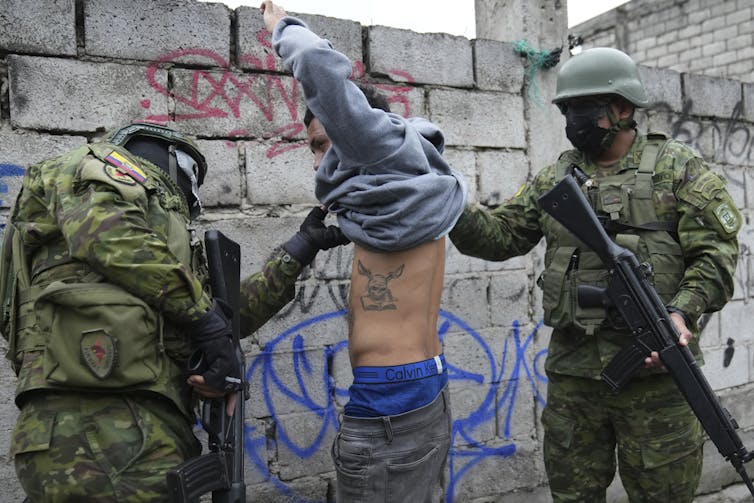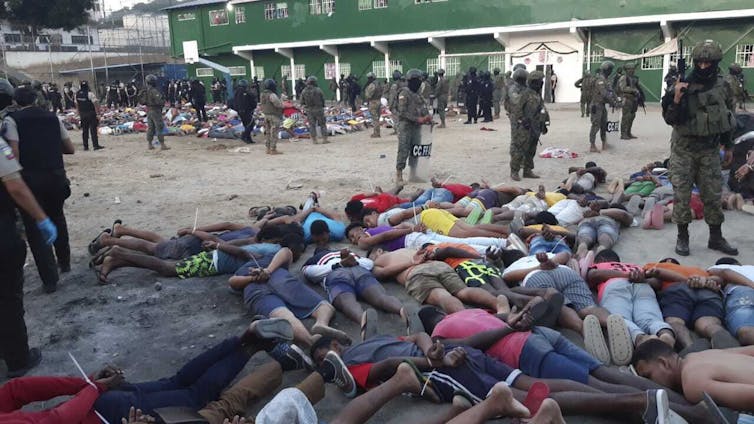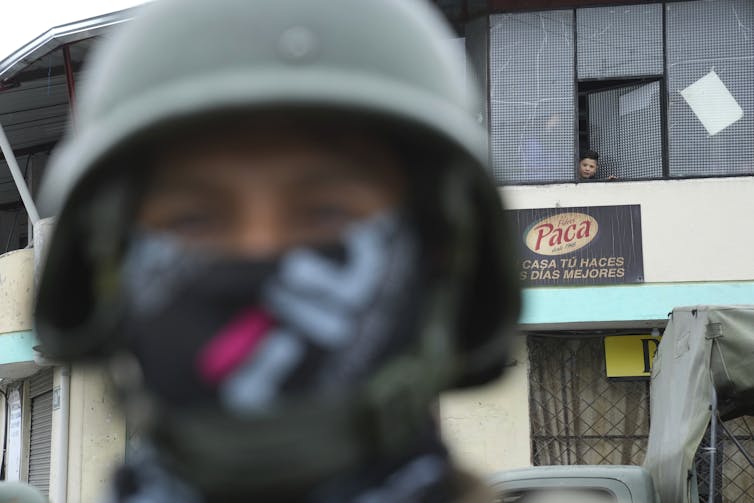In 1991, Ecuadorian President Rodrigo Borja Cevallos uttered a famous phrase, calling Ecuador an “island of peace” in the world. These words were repeated ten years later by President Gustavo Noboa Bejarano in his 2002 Report to the Nation. Today, however, they have completely lost their meaning – and worryingly so.
Ecuador has unexpectedly become one of the most violent countries in the world, described by the United Nations as a country “under stress”.
According to a study by the independent Global Initiative against Transnational Organised Crime, the country ranks as the 11th most violent in the world, alongside Syria, Iraq and Afghanistan.
In addition, Ecuador ranks 96th out of 146 countries (23rd out of 32 regionally) in the 2023 Rule of Law Index (World Justice Project), which evaluates factors such as limits to government power, absence of corruption, political openness, fundamental rights, order and security, regulatory compliance, civil justice and criminal justice.
Just five years ago, Ecuador was still considered one of the safest countries in Latin America, with a rate of 6.7 violent deaths per 100,000 inhabitants. Today, it is nearing a rate of 45 deaths.
Earlier this month, President Daniel Noboa declared a state of emergency with a curfew throughout the country following the escape of the top leader of the most important criminal group, Los Choneros. This resulted in explosives attacks and kidnappings by criminal groups and the arrests of members of the country’s security forces and prison officials.
It was a clear demonstration of the level of firepower the criminal gangs are able to use against the state’s security forces. And rather than isolated incidents, it’s now clear this violence is becoming a war between criminal groups and the state over territory and control of populations.
Read more: How Ecuador went from being Latin America's model of stability to a nation in crisis
The economics of drug trafficking drives crime
The variable most responsible for this rise in violence and insecurity in Ecuador is drug trafficking. And not just cocaine, but also heroin and, more recently, the destructive synthetic drug fentanyl.
This is due to several factors:
the country’s location next door to the world’s largest cocaine producers
the dollarised economy, which is attractive for money laundering
the limited ability of the state to monitor the various air, sea and land drug transport routes into and out of the country
structural causes, such as unemployment, increasing inequality and lack of development
and the strong influence of the media, especially social networks, on young people who are increasingly seduced by the culture of drug trafficking and the lure of leadership, power and easy money.

Local drug lords have also formed strategic alliances with transnational drug trafficking cartels. In addition to bringing economic benefits, these connections have led to:
a professionalisation in the management of criminal markets in Ecuador
increased specialisation in criminal tasks (custody, extortion, money laundering, illegal mining, among others)
better training of hitmen, explosives experts and specialists in criminal intelligence and counterintelligence
and more effective communication among guerrillas around the country, such as through graffiti art.
Crisis in the penitentiary system
Another critical underlying factor was the reduction of the central government’s budget for reforming the country’s penitentiary system several years ago.
This led to the dismissal of prison officials and the elimination of directorates in the justice sector. In fact, under the government of former President Lenin Moreno, the Ministry of Justice, Human Rights and Religious Affairs was eliminated and the Secretariat of Human Rights and the National Service for Attention to Persons Deprived of Liberty (which runs the corrections system) were created.
All this has led to a lack of clarity in the management of serious prison problems and an increase in overcrowding in the country’s 34 detention centres. As a result, the prisons have become strategic strongholds for drug lords, beset by crime and violence. In the last three years, there have been 11 prison massacres, resulting in 412 deaths across Ecuador.

The prisons are also contributing to criminal enterprises on the streets. Live internet broadcasts of atrocities have become common, such as dismemberments and decapitations, as well as limbless corpses and vital organs exposed on bridges and in other public places.
In fact, there’s an increasingly popular expression in the country that “it is safer to live in prisons than on the streets”.
When it comes to this kind of violence, the local mafia groups have learned from the practices of Colombian and Mexican cartels.
The crudest displays of violence have come from the groups aligned with the Cartel Jalisco Nueva Generación, formerly known as the Mata Zetas. This group has received military training (some members in the United States) and its practices are based in religious cultural beliefs, including cannibalism and the cult of Santa Muerte, which influence their chilling acts of violence.
Read more: Inside Mexico's war on drugs: Conversations with 'el narco'
Assassination schools
When a new executive decree was signed by former President Guillermo Lasso in April that made it easier for civilians to carry and use weapons, criminal groups increased their attacks, especially assassinations by hitmen with military weapons purchased on the illicit market.
Surprisingly, the existence of four notorious schools of hired killers, located in the cities of Durán, Manta, Lago Agrio and Esmeraldas, has not been formally denounced by the government
Information from police sources indicates that these schools promote junior, intermediate and senior assassins and, depending on their experience in terms of number of assassinations, strict compliance with orders and the level of importance of the targets, their salaries vary between USD$200 and $10,000 per month.
The training of these assassins is not necessarily done in person, but virtually, through video games which are intended to help recruits lose their feelings of fear and remorse. This is a vital psychological preparation for young people who, due to poverty, unemployment and lack of study opportunities, are easily recruited to work as assassins for the various mafia groups.
The gangs have increasingly powerful mechanisms for attracting those in the most economically desperate areas of the country, who are forced (either by threats or economic necessity) to join the criminal underworld.

A narco-state under construction
Increasingly, criminal groups are able to wield influence over local governments, municipalities and mayors’ offices to hide their criminal endeavours in pseudo-legal ways and advance their strategic objectives of ultimately turning Ecuador into a narco-state.
And Ecuador’s citizens are the ones paying the price. The macabre murders, kidnappings and other acts of violence are forcing them to change their routines or adopt lives of complete seclusion.
There is an atmosphere of insecurity and mistrust creeping into society, which is being exacerbated by the traditional and social media, who continue to operate without a real commitment to journalistic ethics and social responsibility.


